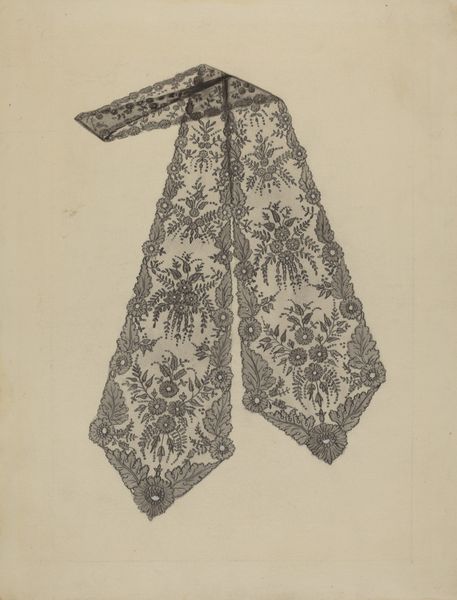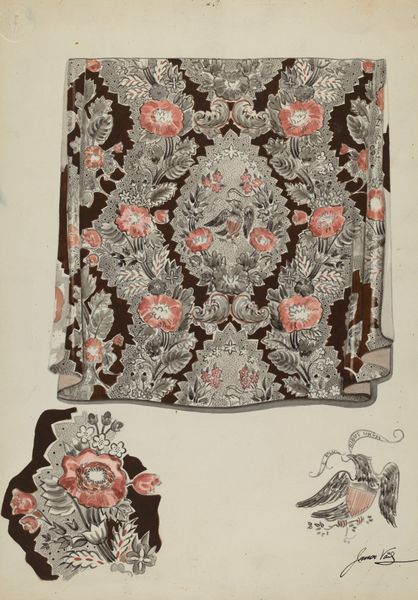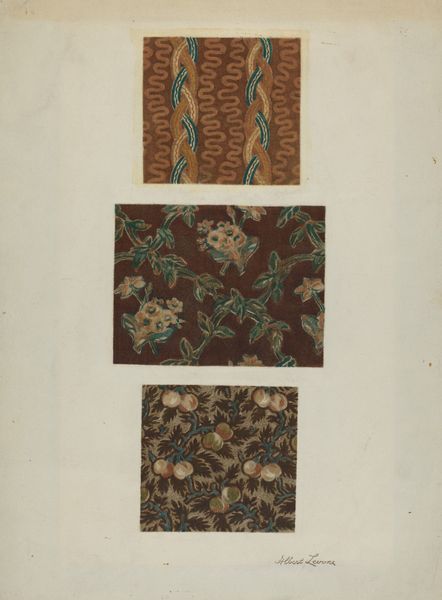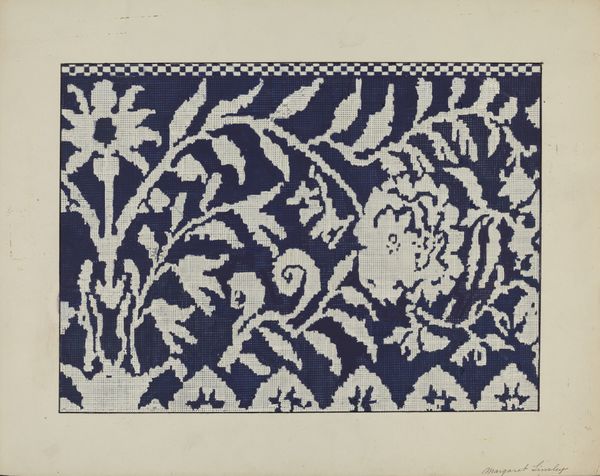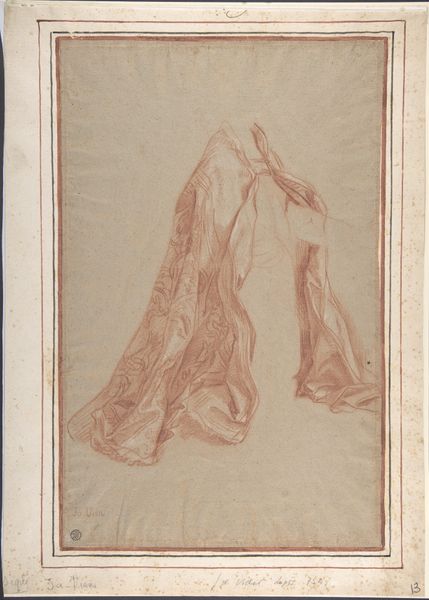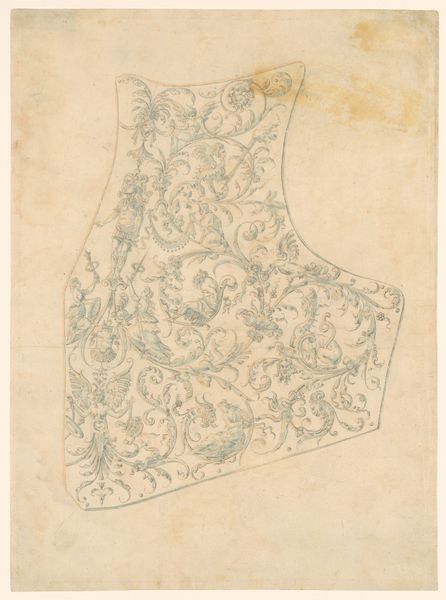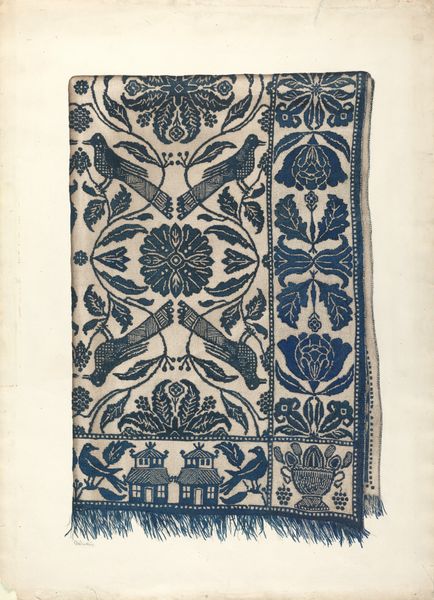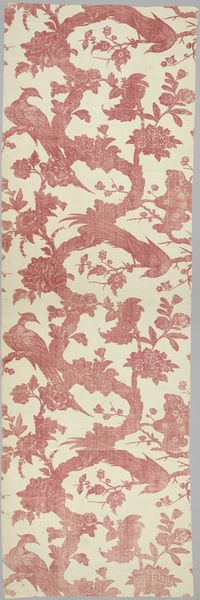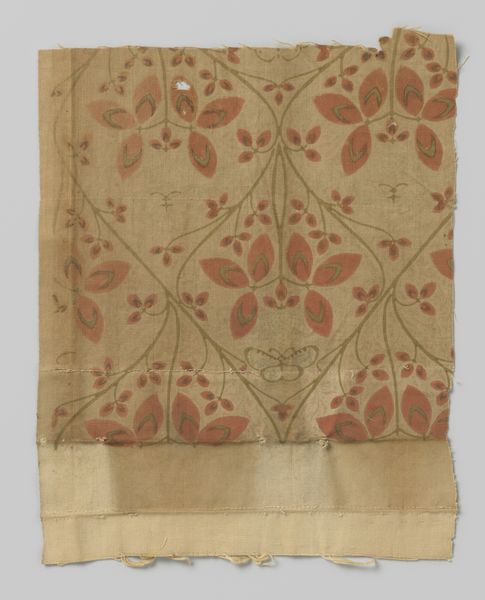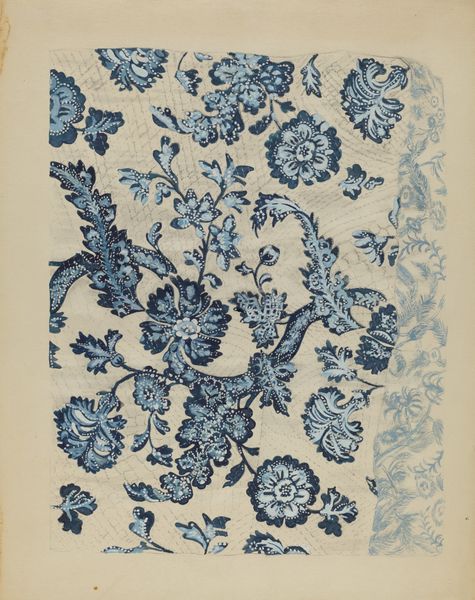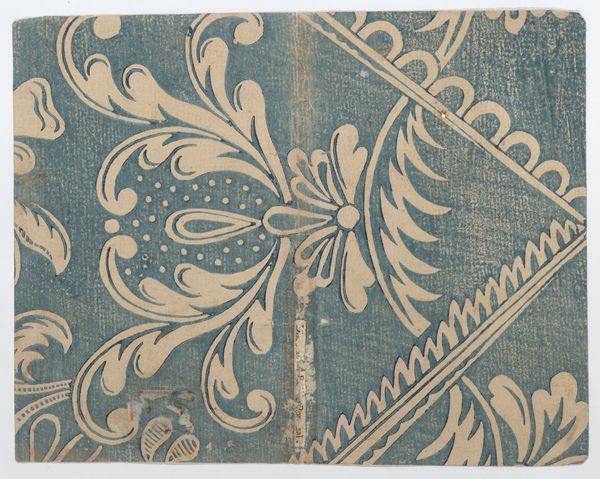
Ærme studie til Elefantridderordenens dragt. Formentlig til portræt af A. G. Moltke 1752 - 1792
0:00
0:00
Dimensions: 342 mm (height) x 280 mm (width) (bladmaal)
Editor: This drawing by C.G. Pilo, dating from between 1752 and 1792, is called "Preliminary Study for the Costume of the Order of the Elephant, probably for the portrait of A. G. Moltke." It’s an ink drawing and I’m really intrigued by how meticulously the floral design of what looks like a sleeve has been rendered. How would you interpret this piece in the context of its time? Curator: Well, considering the Order of the Elephant was and is Denmark’s highest order of chivalry, this drawing speaks volumes about the socio-political landscape of the era. The meticulous detail isn't just aesthetic; it reflects the importance of symbols and regalia in maintaining social order and legitimizing power. The Baroque style, with its ornate and lavish decoration, served as a visual language of status and authority. How do you think the public at the time would have perceived this emphasis on such elaborate garments? Editor: I suppose they would see it as the uniform of those in power, setting them apart, almost elevating them to another status. Were these types of studies common? Curator: Exactly. Preliminary sketches like these give us insight into the process of constructing aristocratic identity. They highlight how carefully curated public image was, especially amongst the elite. The Order represented not just nobility, but service to the crown. Did these symbols reinforce social stability? How? Editor: I can imagine it could, by creating a very visible and carefully managed representation of authority. It is also interesting to me, that the drawing would remain. How the preservation of these works contributed to creating national heritage? Curator: That’s a crucial point. By preserving works like these, museums actively shape the narrative around national identity, solidifying the image of powerful and sophisticated. What do you take away from thinking about this image's legacy now? Editor: I guess I now see the artwork not just as a drawing of fabric, but as a really carefully constructed projection of power and status, one that continues to have cultural resonance. Curator: Precisely. Recognizing this blend of artistic skill and socio-political context enhances our appreciation for how art functions within society.
Comments
No comments
Be the first to comment and join the conversation on the ultimate creative platform.
